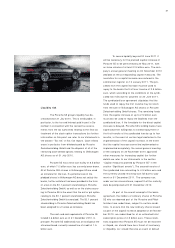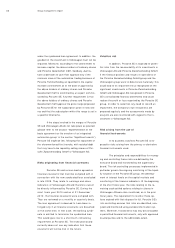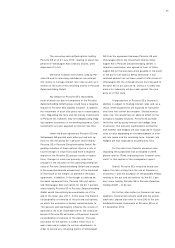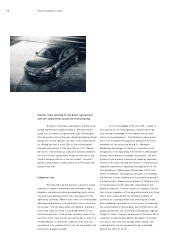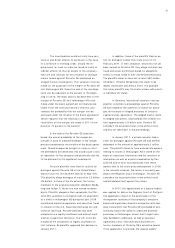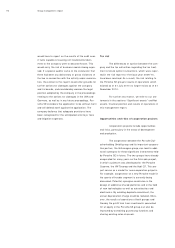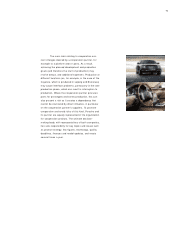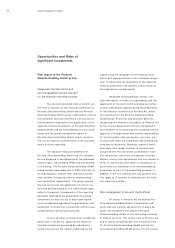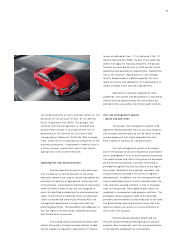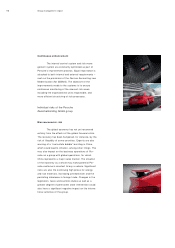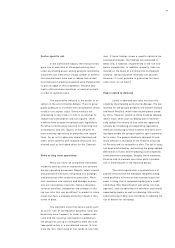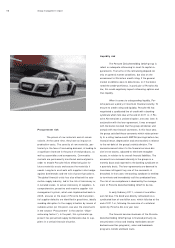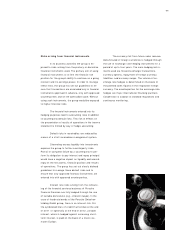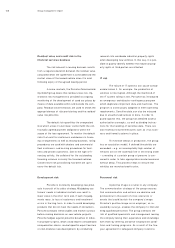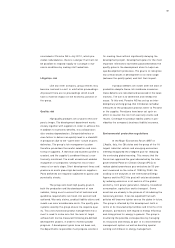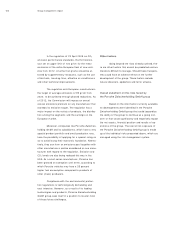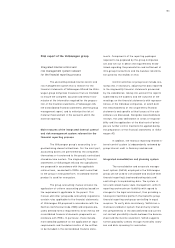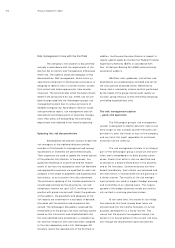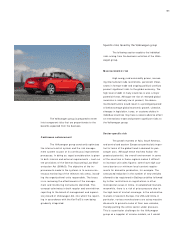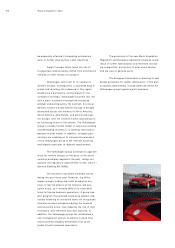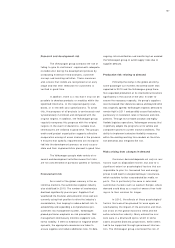Porsche 2010 Annual Report Download - page 99
Download and view the complete annual report
Please find page 99 of the 2010 Porsche annual report below. You can navigate through the pages in the report by either clicking on the pages listed below, or by using the keyword search tool below to find specific information within the annual report.Sector-specific risk
In the automotive industry the financial crisis
gave rise to new risks or increased existing ones.
Lower purchasing power among potential automotive
customers has meant that a large number of automo-
tive manufacturers have had to reduce their prices;
cost-intensive marketing measures were implemented
to gain an edge on the competition. Porsche also
had to offer purchase incentives on several markets
in order to optimize sales.
The automotive industry is the center of at-
tention in the environmental debate. There is great
public pressure to minimize fuel consumption, which
could in turn impact sales. Some markets are
threatening to levy taxes or tolls in an attempt to
reduce fuel consumption and CO2 figures. Other
markets have already introduced such regulations.
Porsche is continuously working on improving fuel
consumption and CO2 figures of the vehicles to
meet existing regulations or potential new regula-
tions. So as not to adversely impact demand and
sales, drive systems with reduced emissions are
offered such as the hybrid drive for the Cayenne.
Risks arising from operations
Risks can never be completely eliminated.
Incidents such as fires or explosions can severely
disrupt operating processes. Regular safety checks
and protective measures integrated into buildings
and processes offer preventive protection. More-
over, business interruptions and damage to prop-
erty are covered by insurance. Natural disasters,
terrorist activities, pandemics and changes in the
law are risks that can be difficult to predict in some
cases but have a sizeable economic impact if they
come to pass.
The statistics show that natural perils such
as storm, hail, or earthquakes (property risks) are
becoming more frequent. In order to reduce such
risks and the resulting interruption to production,
the group has set up an emergency team that can
take quick action in a coordinated manner to mini-
mize the loss. Each case of loss leads to new find-
ings. If these findings reveal a need to optimize the
existing processes, the findings are evaluated in
detail and, if need be, implemented in the risk miti-
gation organization. In addition, property risks are
insured on the basis of a commercial cost-benefit
analysis, taking insurance methods into account.
However, it is not possible to guarantee full insur-
ance cover for all claims.
Risks related to demand
Levels of demand and sales are also influ-
enced by the changing economic landscape. The key
markets for the group’s products are western Europe
and North America, which have recently been joined
by China. However, growth in China could be jeopard-
ized if major cities such as Beijing wish to dramati-
cally reduce the volume of new vehicles registered
annually by introducing corresponding regulations.
Intensive monitoring of local markets and early warn-
ing signs enable the group to quickly spot a potential
fall in sales. The general decline in demand for pre-
mium vehicles in the wake of the financial crisis has
hit Porsche and its competitors alike. The fall in sales
has been confronted by reallocating the geographical
distribution of sales and introducing country-specific
sales promotion packages. Despite these measures,
Porsche had to maintain short-time work in produc-
tion in Zuffenhausen in the reporting period.
The retail organization is granted terms of
payment that involve the individual recipients being
rated positively in terms of their economic perform-
ance, a rating that is reviewed regularly by a credit
committee. Risk diversification and active risk man-
agement, such as obtaining the collateral customarily
expected by banks as well as obtaining information
and monitoring it daily also contribute to reducing the
risk of default for the group.
97


